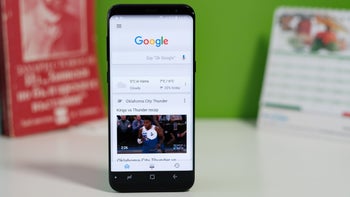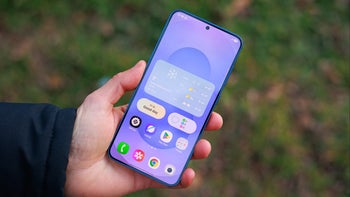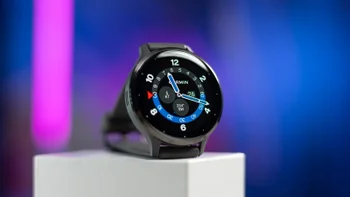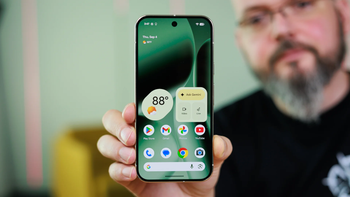HP webOS 3.0 Review

Introduction:
As it stands right now, there are 5 major players in the tablet platform space with each one vying to get its piece of the pie – and as we all know, webOS is the latest member to the join the crew in this increasingly competitive market. We’ve already gone through the webOS 3.0 powered HP TouchPad in detail with our review, but despite its shortcomings, we’re curious to see how webOS 3.0 presents itself as an actual tablet operating system. Although it isn’t necessarily a new platform built from the ground up, it carries along some of the more popular foundational principles of the mobile platform – but more importantly, how does it compare to the crowded competition?
Design aesthetics & Functionality:
Some would probably dare to be brash about pointing out webOS 3.0’s deliberate similar appearance to webOS for smartphones, but in all honesty, it’s not the first time we’ve seen it happen since the iPad mimics the iPhone’s look and feel. Granted that some might be disappointed by its unchanged presentation, webOS 3.0 still caters to the tablet medium very well with its careful and simplistic approach. In fact, we like that the status bar is visible at all times to give us quick access to some information and basic functions without the need to run some sort of app. And despite the fact that the sliding launcher bar is now gone, we’re not all too disappointed with the decision because you can always bring it up by pressing the TouchPad’s physical home button, or simply executing a swipe up gesture from the bottom bezel.
Even though webOS was born to be a tablet platform, there’s one thing that’s just an eyesore by looking at its homescreen – and that’s the exorbitant amount of dead space. Of course, the background wallpaper, launcher bar, and Just Type box are all visible, but there’s just an exorbitant amount of unused space there that could’ve been better used. As with most other things, we’re not picky with the app panel mainly because its layout is profoundly evident with other tablet platforms.
Undeniably, the interface isn’t opulent with glitzy looking 3D effects, but we continue to be enamored by its tasteful approach with multi-tasking. Whereas other tablet platforms implement a static experience, webOS is known to be more dynamic with its operation thanks to its combination of using gestures and its cards system. Naturally, it boasts far more organization thanks to the aid of its “stacking” feature, but there’s still plenty of interaction when it comes to exiting apps completely – thus making the experience a very engaging one. Additionally, its notifications system continues to be functional and unobtrusive as they all pop up in the status bar.
Sadly, there isn’t a whole lot in terms of personalization with webOS 3.0 since the only thing we’re presented with is the ability to change the background wallpaper – but then again, it’s no different from the majority of competition. Leaving us with more to desire, Exhibition Mode is indeed an alternative offering even though we have to manually run it, or have the TouchPad charging. Considering that the platform requires some serious horsepower to operate, we’re not all too convinced that the platform is showing off what it’s capable of doing.
Ultimately, that leads us to the undeniable truth that webOS 3.0 is basically marred by some stifling and baffling performance issues that can irritate some people. Actually, its operation is precisely smooth when it works fine, but when it’s not for some odd reason, we experience erratic things like long load times, hang ups, choppiness with navigational operation, and some random crashes that restarts the TouchPad. Needless to say, it’s undoubtedly challenging and doesn’t make webOS 3.0 appear polished. Nevertheless, we’re seriously yearning to see some software updates in the near future to iron out some of the frustrations we have right now.
For any veteran webOS users out there, they’ll easily recognize that most of the core apps with webOS 3.0 employ some of the same characteristic layouts found with their smartphone counterparts. Again, some might expect to find a totally revamped look with its core apps, but instead of doing that, HP has done a great job in refining them.
Specifically, it’s most evident with the email client because at a first glance, any veteran webOS user will immediately see its general resemblance to the one used by webOS smartphones. However, after absorbing it in, we like how HP manages to incorporate its resizable three panel layout to better give you visibility on what’s most important with you. Conversely, it’s still missing out on some desired features that increase productivity – like threaded conversations and the ability so select multiple emails for deletion.
The messaging experience can be equally smooth or erratic depending on the mood of webOS 3.0, but as we already know, the layout of the on-screen keyboard is more than ideal. However, there is the odd bug or something when it comes to the auto-correct feature because after intentionally typing something incorrectly, it’ll naturally correct us by replacing the word. Strangely enough, the replaced word is underlined and is indicated as a misspelling, but upon hitting it with our finger, it actually suggests replacing it with an incorrect word. Odd to say the least, it’s undoubtedly a bug that can frustrate some people.
Synergy is represented well with the Contacts app since it’ll display all the usual pertinent information regarding each person – plus it’ll link to other profiles that include things like Facebook, Google, and Skype.
Similar to our dislike of the amount of dead space found with the homescreen of webOS 3.0, we’re feeling much the same about the Calendar app as well since it’s a direct up-scaled version of what’s used by webOS smartphones. Obviously, there are three calendar views available, but they could’ve better organized its layout to take advantage of the unused space.
Web browser & Multimedia:
As a whole, the web browsing experience is tolerable enough to accept mainly due to its functional and easy organization – but still, it’s sometimes dampened by some sketchy performance issues. Nonetheless, Flash support aids in keeping the experience firmly intact to what’s found with a desktop based browser. So yeah, we’ll accept it at its current state, but we’re surely waiting to see how much better it can get with future bug fixes.
If there’s one app that perfectly sums up the blemishes we find throughout webOS 3.0, it has to be none other than the Photos & Videos app. Blatantly, it struggles to keep any momentum with its operation since we experience unnerving things like delays, lock ups, and general choppiness when browsing through multimedia content. Still, we dig its ability to populate images from our Facebook photo albums, but it doesn’t help that it’s limited in functionality – meaning, it lacks any serious sharing or editing functions.
Besides Android’s Honeycomb platform, there aren’t a whole lot of eye-catching looking music players out there. Without a doubt, the conventional looking presentation with the webOS 3.0 music player isn’t surprising by any means, but at the same time, it would’ve been great to see some minute distinction to separate it over the pack.
Lastly, instead of launching a dedicated app, clicking on the YouTube icon in the app panel essentially points us in the direction of the YouTube web site, which works well, thanks to the TouchPad's full Flash Player support.
Third-party apps:
Placing our attention with the platform, there’s no arguing that the iPad packs a ton of tablet optimized apps within its App Store right now. However, for other newcomers like Android’s Honeycomb and RIM’s QNX based platform with the PlayBook, they still lack a sizable amount of quality third party apps that are tablet optimized. Taking us by surprise, we’re indubitably enamored by the wealth of quality third party apps available for the platform within the HP App Catalog. Likewise, we’re thrilled to find that developers have taken the time to meticulously create ones that fully take hold of the platform’s potential – while not pushing out ones for the sake of having them available at launch.
Rightfully so, app development is one key ingredient to the success of any platform, but based on what we’re witnessing so far, we’re undeniably impressed with the offerings. Not gimmicky in any way, third party apps like Groupon, Spaz HD, WeatherBug, USA Today, and Comics HD place a lot of emphasis with their presentation – on top of their succinct functionality of course. All in all, there is no shortage of quality apps available with webOS 3.0 from the onset.
Conclusion:
Much like most things that are in the beginning stages of their development, webOS 3.0 still needs some growing up to do before it can resoundingly triumph over the competition – especially when performance bugs hinder its operation. Now that the platform is ready for the big leagues, we’re interested in seeing how HP can polish up the platform’s loose ends to solidify itself as a noteworthy candidate in this ever increasing competitive landscape. We’re not kidding when we say that webOS was destined to be a tablet platform, thanks to its logical and idealistic foundations, but despite some of its challenging performance issues, it’s still usable in its current incarnation – albeit, it can be trying at times. Overall, it has some strong support with app developers, and that partnership will indeed go a long way to benefit the platform in the long run, but more importantly, HP will need to be aggressive in fine tuning and branching out webOS 3.0 – either that, or face an even faster demise in the tablet space.
HP webOS 3.0 Review:
As it stands right now, there are 5 major players in the tablet platform space with each one vying to get its piece of the pie – and as we all know, webOS is the latest member to the join the crew in this increasingly competitive market. We’ve already gone through the webOS 3.0 powered HP TouchPad in detail with our review, but despite its shortcomings, we’re curious to see how webOS 3.0 presents itself as an actual tablet operating system. Although it isn’t necessarily a new platform built from the ground up, it carries along some of the more popular foundational principles of the mobile platform – but more importantly, how does it compare to the crowded competition?
Design aesthetics & Functionality:
Undeniably, the interface isn’t opulent with glitzy looking 3D effects, but we continue to be enamored by its tasteful approach with multi-tasking. Whereas other tablet platforms implement a static experience, webOS is known to be more dynamic with its operation thanks to its combination of using gestures and its cards system. Naturally, it boasts far more organization thanks to the aid of its “stacking” feature, but there’s still plenty of interaction when it comes to exiting apps completely – thus making the experience a very engaging one. Additionally, its notifications system continues to be functional and unobtrusive as they all pop up in the status bar.
Sadly, there isn’t a whole lot in terms of personalization with webOS 3.0 since the only thing we’re presented with is the ability to change the background wallpaper – but then again, it’s no different from the majority of competition. Leaving us with more to desire, Exhibition Mode is indeed an alternative offering even though we have to manually run it, or have the TouchPad charging. Considering that the platform requires some serious horsepower to operate, we’re not all too convinced that the platform is showing off what it’s capable of doing.
Ultimately, that leads us to the undeniable truth that webOS 3.0 is basically marred by some stifling and baffling performance issues that can irritate some people. Actually, its operation is precisely smooth when it works fine, but when it’s not for some odd reason, we experience erratic things like long load times, hang ups, choppiness with navigational operation, and some random crashes that restarts the TouchPad. Needless to say, it’s undoubtedly challenging and doesn’t make webOS 3.0 appear polished. Nevertheless, we’re seriously yearning to see some software updates in the near future to iron out some of the frustrations we have right now.
Core apps:
For any veteran webOS users out there, they’ll easily recognize that most of the core apps with webOS 3.0 employ some of the same characteristic layouts found with their smartphone counterparts. Again, some might expect to find a totally revamped look with its core apps, but instead of doing that, HP has done a great job in refining them.
Specifically, it’s most evident with the email client because at a first glance, any veteran webOS user will immediately see its general resemblance to the one used by webOS smartphones. However, after absorbing it in, we like how HP manages to incorporate its resizable three panel layout to better give you visibility on what’s most important with you. Conversely, it’s still missing out on some desired features that increase productivity – like threaded conversations and the ability so select multiple emails for deletion.
The messaging experience can be equally smooth or erratic depending on the mood of webOS 3.0, but as we already know, the layout of the on-screen keyboard is more than ideal. However, there is the odd bug or something when it comes to the auto-correct feature because after intentionally typing something incorrectly, it’ll naturally correct us by replacing the word. Strangely enough, the replaced word is underlined and is indicated as a misspelling, but upon hitting it with our finger, it actually suggests replacing it with an incorrect word. Odd to say the least, it’s undoubtedly a bug that can frustrate some people.
Synergy is represented well with the Contacts app since it’ll display all the usual pertinent information regarding each person – plus it’ll link to other profiles that include things like Facebook, Google, and Skype.
Similar to our dislike of the amount of dead space found with the homescreen of webOS 3.0, we’re feeling much the same about the Calendar app as well since it’s a direct up-scaled version of what’s used by webOS smartphones. Obviously, there are three calendar views available, but they could’ve better organized its layout to take advantage of the unused space.
Web browser & Multimedia:
As a whole, the web browsing experience is tolerable enough to accept mainly due to its functional and easy organization – but still, it’s sometimes dampened by some sketchy performance issues. Nonetheless, Flash support aids in keeping the experience firmly intact to what’s found with a desktop based browser. So yeah, we’ll accept it at its current state, but we’re surely waiting to see how much better it can get with future bug fixes.
If there’s one app that perfectly sums up the blemishes we find throughout webOS 3.0, it has to be none other than the Photos & Videos app. Blatantly, it struggles to keep any momentum with its operation since we experience unnerving things like delays, lock ups, and general choppiness when browsing through multimedia content. Still, we dig its ability to populate images from our Facebook photo albums, but it doesn’t help that it’s limited in functionality – meaning, it lacks any serious sharing or editing functions.
Besides Android’s Honeycomb platform, there aren’t a whole lot of eye-catching looking music players out there. Without a doubt, the conventional looking presentation with the webOS 3.0 music player isn’t surprising by any means, but at the same time, it would’ve been great to see some minute distinction to separate it over the pack.
Lastly, instead of launching a dedicated app, clicking on the YouTube icon in the app panel essentially points us in the direction of the YouTube web site, which works well, thanks to the TouchPad's full Flash Player support.
Third-party apps:
Placing our attention with the platform, there’s no arguing that the iPad packs a ton of tablet optimized apps within its App Store right now. However, for other newcomers like Android’s Honeycomb and RIM’s QNX based platform with the PlayBook, they still lack a sizable amount of quality third party apps that are tablet optimized. Taking us by surprise, we’re indubitably enamored by the wealth of quality third party apps available for the platform within the HP App Catalog. Likewise, we’re thrilled to find that developers have taken the time to meticulously create ones that fully take hold of the platform’s potential – while not pushing out ones for the sake of having them available at launch.
Rightfully so, app development is one key ingredient to the success of any platform, but based on what we’re witnessing so far, we’re undeniably impressed with the offerings. Not gimmicky in any way, third party apps like Groupon, Spaz HD, WeatherBug, USA Today, and Comics HD place a lot of emphasis with their presentation – on top of their succinct functionality of course. All in all, there is no shortage of quality apps available with webOS 3.0 from the onset.
Conclusion:
Much like most things that are in the beginning stages of their development, webOS 3.0 still needs some growing up to do before it can resoundingly triumph over the competition – especially when performance bugs hinder its operation. Now that the platform is ready for the big leagues, we’re interested in seeing how HP can polish up the platform’s loose ends to solidify itself as a noteworthy candidate in this ever increasing competitive landscape. We’re not kidding when we say that webOS was destined to be a tablet platform, thanks to its logical and idealistic foundations, but despite some of its challenging performance issues, it’s still usable in its current incarnation – albeit, it can be trying at times. Overall, it has some strong support with app developers, and that partnership will indeed go a long way to benefit the platform in the long run, but more importantly, HP will need to be aggressive in fine tuning and branching out webOS 3.0 – either that, or face an even faster demise in the tablet space.
HP webOS 3.0 Review:
Follow us on Google News












Things that are NOT allowed:
To help keep our community safe and free from spam, we apply temporary limits to newly created accounts: